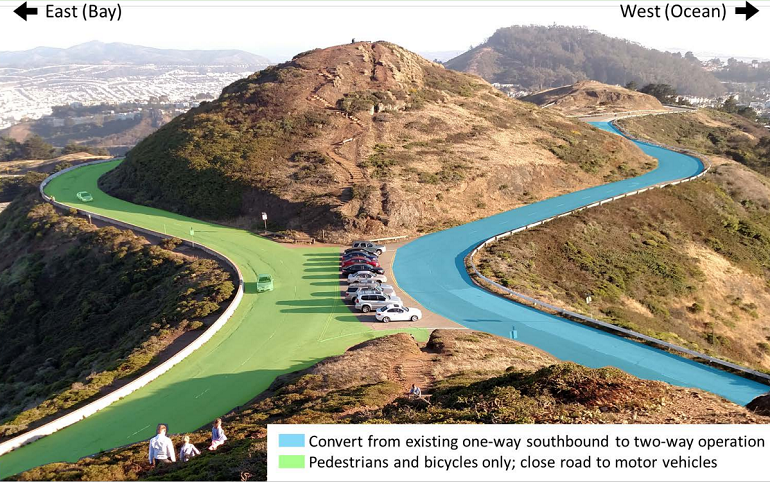The top of Twin Peaks is about to get a lot more spectacular. On Wednesday, July 13, a portion of the “figure 8” roadway loop will become a car-free area for people gazing, hiking and biking on top of the San Francisco’s miniature mountain range.
It’s all part of the Twin Peaks Figure 8 Redesign Project, which includes a two-year pilot we’ve developed with the San Francisco Recreation and Parks Department and SF Public Works. The project was shaped by community feedback via surveys and an open house, and it was approved by the SFMTA Board of Directors on April 19.

Under the pilot project, the eastern section of the roadway on Twin Peaks will be made car-free, and the western section will carry two-way vehicle traffic. (Note: The roads will not be colored blue and green – the colors in this rendering are for illustration purposes only.)
Using paint and temporary barriers, we’ll create a car-free area on the eastern half of the “figure 8” roadway, while the western half will be converted from one-way traffic to two-way traffic. We’ll also create legitimate parking spaces at the center and south intersections to address the illegal parking that already occurs.
The idea behind this temporary pilot project is to provide safe and comfortable access for people to walk, bike and enjoy the top of Twin Peaks by making better use of the road space, which is underused by car traffic. The re-configuration should also simplify confusing intersections.
Once the changes are in place, the Recreation and Parks Department will post a survey on its website and schedule meetings and other opportunities where you can give feedback.
Over the next year, we’ll evaluate how well it works by observing how people use the roadways, counting the number of vehicles like cars and tour buses, taking speed surveys, observing parking behavior and surveying people who use the area. Then, we'll use the findings to form a plan for more permanent changes.
Are you as excited as we are? We'll race you to the top.